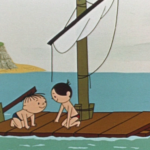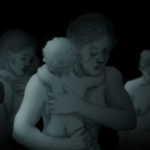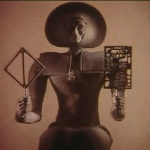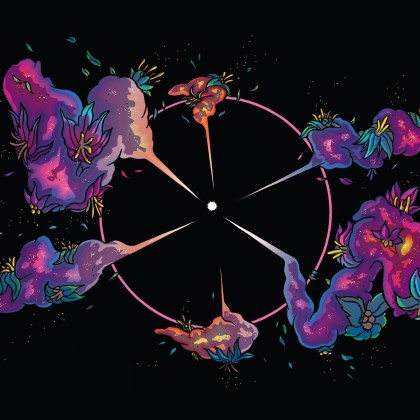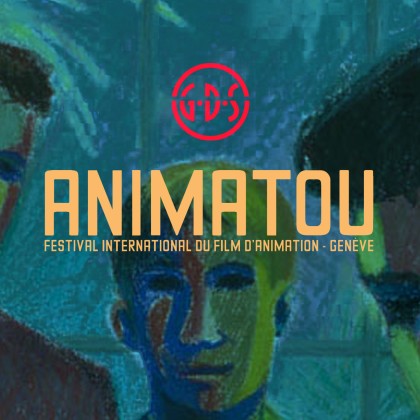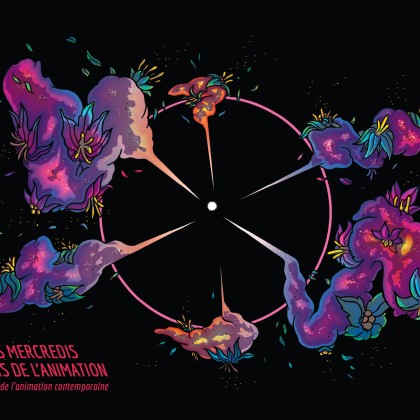
La Belle Pologne
Pour cette édition 2019, Animatou met à l’honneur la Pologne, où les arts visuels et en particulier le cinéma d’animation ont joué un rôle capital.
Entre le MEG et le Spoutnik, nous vous proposons 9 programmes pour découvrir la riche tradition de l’animation polonaise, dont une rétrospective de courts métrages dédiée au réalisateur Piotr Dumała, un programme de dessins animés tirés de la mythique série Bolek et Lolek, un long métrage proposé par le Spoutnik dans le cadre des séances psychotroniques, et 6 programmes de courts classiques et contemporains sélectionnés spécialement par la curatrice polonaise Aneta Ozorek, directrice artistique du KLIK Holland Animation Festival. Le festival finira en beauté avec un concert spécial de clôture organisé par les Ateliers d’ethnomusicologie.
Voir en bas de page pour tous les programmes Piękna Polska dans l’ordre chronologique, ou cliquer sur ce lien pour accéder au programme jour par jour et à la billetterie en ligne.
Le cinéma d’animation, sismographe de la société polonaise
Le cinéma d’animation polonais commence tardivement (Kuczkowski, la Romance des petites chaises, 1916) et se distingue aussitôt par son attirance formaliste. L’œuvre expérimentale des Themerson, techniquement composite (Pharmacie, 1930; l’Œil et l’oreille, 1945), ou les jeux de marionnettes de la Marmite d’or (1935) de Marzak, collaborateur de Starevitch à Paris, le démontrent.
L’histoire du cinéma d’animation polonais se singularise après-guerre et focalise inconsciemment la problématique d’alors : que faire de l’Holocauste? Traumatisé, le cinéma d’animation rumine la matière détruite et tente de formuler la nouvelle réalité. À partir de 1947, le studio Se-ma-for, celui de Lodz et celui des documentaires de Varsovie incarnent cette conscience, produisant les premiers films des fondateurs de la modernité polonaise, contemporains de Wajda et Polanski : Wasilewski (poète, satiriste, réalisateur de À l’époque du roi Kracus, 1947), Haupe et Bielinska (réalisateurs du premier long métrage animé, Janosik, 1954 ; la Relève de la garde, 1958), Borowczyk et Lenica (Il était une fois, 1957 ; la Maison, 1958). Les inventions graphiques des années 1956-1958 résonnent avec celles de l’école polonaise de l’affiche.
Étrangeté, guerre-amour, humour grinçant sont les thématiques condensant les hantises polonaises. Borowczyk et Lenica, revendiquant un retour aux primitifs du cinéma (Méliès), incarnent simultanément une rupture. Après la répression stalinienne de 1956, ils s’installent en France en 1959.
Une nouvelle page s’ouvre, dominée par des réalisateurs dont l’esprit frondeur existentialiste stylise, de manière minimaliste, la schizophrénie sociétale, tels Urbanski (Jeu graphique, 1962), Giersz (le Rouge et le Noir, 1963) ou Szczechura (le Voyage, 1970). Dans les années 80, à l’apparition de Solidarnosc, Dumala (Franz Kafka, 1991) et Rybczynski (Tango, 1980), nouvelle génération critique, ouvrent à une re-définition du cinéma d’animation…
Paradoxalement, depuis le retour de la Pologne dans le camp des démocraties occidentales, l’expressivité incisive de son cinéma d’animation est moins lisible même si les remarquables recherches sensitives de Kucia (Synchronisation des instruments, 2000) ou la nomination aux Oscars de Baginski (Cathédrale, 2002) démontrent sa vivacité.
Pascal Vimenet
Auteur, réalisateur, enseignant spécialisé (EMCA, Angoulême) et chercheur associé à l’Université Toulouse Jean-Jaurès.
Il a enseigné à Paris (Gobelins), Valence (La Poudrière), Tours (Université François Rabelais). Concepteur d’événements (Borowczyk, 2008; Svankmajer, 2010), il publie depuis 30 ans. Son dernier ouvrage en cinq volumes : Un abécédaire de la fantasmagorie (Ed. L’harmattan).
Pour en découvrir plus, voyez sa conférence « Petite histoire du cinéma d’animation polonais » (2014) sur www.forumdesimages.fr
Beautiful Poland
Animatou’s 2019 Country of Honour is Poland, a country where visual arts and animation have played an essential role in the shaping of popular culture.
9 programmes will screen at MEG and at Spoutnik Cinema to paint a realistic landscape of the rich tradition of Polish animation , among which a retrospective dedicated to Polish director Piotr Dumała, a programme of cartoons taken from the mythical series Bolek & Lolek, a feature film, and 6 programmes of historical and contemporary shorts selected by Polish curator Aneta Ozorek, artistic director of KLIK Holland Animation Festival. Don’t miss the cherry on the cake, a concert organised by ADEM on the last day of the festival.
See below for the full list of Piękna Polska events in chronological order, or click on this link to access the day-by-day programme and the online ticket office.
Animation Cinema: A Seismograph of Polish Society
Polish animation cinema got a late start with Kuczkowski’s Flirting Chairs in 1916, but quickly distinguished itself through its formal features. Themerson’s experimental work, using mixed forms (Pharmacy, 1930; The Eye and the Ear, 1945), and puppet games in The Pot of Gold (1935) by Marzak, Starevitch’s collaborator in Paris, stand as proof of this formal distinction.
World War II left an indelible mark on the history of Polish animation. Its post-war films unconsciously return to grappling with the Holocaust. Traumatized, animated films ruminate on the destruction and attempt to articulate a new reality. From 1947 and on, the Se-ma-for studio, the Lodz studio and the Warsaw documentary studio embodied this awareness and produced the first films by the founders of Polish modernity, contemporaries of Wajda and Polanski: Wasilewski (poet, satirist, director of In the Time of King Krakus, 1947), Haupe and Bielinska (directors of the first animated feature film, Janosik, 1954; The Changing of the Guard, 1958), and Borowczyk and Lenica (Once Upon a Time, 1957; House, 1958). Graphic innovations in the period 1956-1958 resonate with the aesthetics of the Polish School of Posters.
Strangeness, love and war, and dark humor are Polish animation’s obsessive themes. Borowczyk and Lenica claim a return to the origins of cinema, to Méliès, while at the same time staging a rupture. After the Stalinist repression of 1956, they settled in France in 1959.
A new page opened, dominated by directors whose existentialist rebelliousness depicted society’s schizophrenia in minimalist style. These directors included Urbanski (Graphic Game, 1962), Giersz (The Red and the Black, 1963) and Szczechura (The Trip, 1970). In the 1980s, with the emergence of Solidarnosc, Dumala (Franz Kafka, 1991) and Rybczynski (Tango, 1980), a new critical generation opened the way for a redefinition of animation cinema.
Paradoxically, since Poland’s return to the camp of Western democracies, the incisive expressiveness of its animated films is less readable. Nevertheless, its vivacity continues, as demonstrated by Kucia’s remarkable sensory work in Tuning the Instruments (2000) and Baginski’s Oscar nomination for The Cathedral in 2002.
by Pascal Vimenet, author, director, teacher (EMCA, Angoulême) and associate researcher at the University of Toulouse Jean-Jaurès.
He has taught in Paris (Gobelins), Valence (La Poudrière) and Tours (François Rabelais University). Vimenet is an event designer (Borowczyk, 2008; Svankmajer, 2010) and has been publishing for 30 years. His latest work is the five-volume Un abécédaire de la fantasmagorie published by L’harmattan.
